
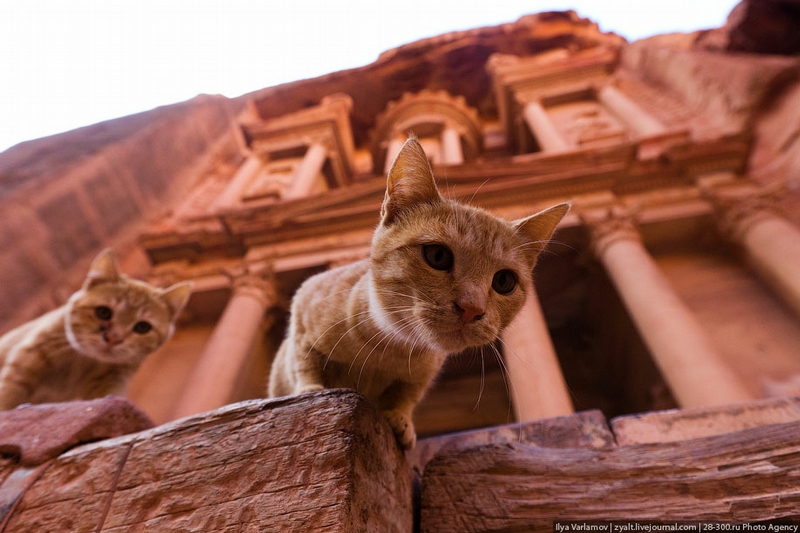
Ancient Petra city is the main sightseeing of Jordan. It's located at a height of more than 900 m above the sea level inside narrow Siq Canyon surrounded by the beautiful Aravah Valley. The only road to the valley goes through the gorges in the North and South of it. In 2007 Petra was called one of the new seven wonders of the world.
Petra was located at the crossroads of two main trade roads: one of them connected the Red Sea with Damascus and the second one - the Arabia Gulf with Gaza at the coast of the Mediterranean Sea. That's why the caravans, going from the Arabia Gulf and full of precious spices, had to endure harsh conditions of the Arabian Desert for weeks until they reached the salutary coolness of Siq Canyon leading to Petra.
There the travellers could finally find food, shelter and cool and life-giving water. For hundreds of years trade has been very profitable in Petra. But when the Romans explored the new sea lanes to the East, the land spices trade lessened and Petra gradually became deserted and lost in lands. Most of the Petra buildings were erected in different epochs beginning with the 18th century BC to the 6th century AD.
Now Petra is visited by about half a million tourists annually. A one day admission ticket costs about 55 euros, two days - 60.
Pictured: a view of the road to Petra.
From this very place the Siq gorge begins. There is a main road, even and quite wide, which almost all tourists choose to walk by. But there is also another road, less comfortable. If you choose the second one, you should turn right at the post and go through the tunnel. It's very difficult to walk there but you'll have a unique chance to feel like one of the greatest travellers, Johann Ludwig Burckhardt, felt when dicovering this place in 1812.

Some more views from above.


That's how the main road looks. Before the journey begins all the tourists are actively convinced to hire a carriage to get to Petra, but actually the road on foot is really quite easy here. The carriage costs 20 euros - no haggles, the price is officially determined.




With the help of the terra-cotta pipes the Petra architects created a complex water supply system and, in spite of the dry climate, its residents have never been in need of water. There were about 200 reservoirs where rain water was kept in. Besides, these terra-cotta pipes collected water from every possible source within 25 km from Petra. The annual rainfall level here is only 15 cm. So to save the precious water the local residents had to cut the canals and reservoirs right inside the rocks.


When the tourists pass cool Siq Canyon of 1 km long, they see the Treasury - a great building with a facade, cut from a huge rock. This is one of the best saved buildings of the 1st century.
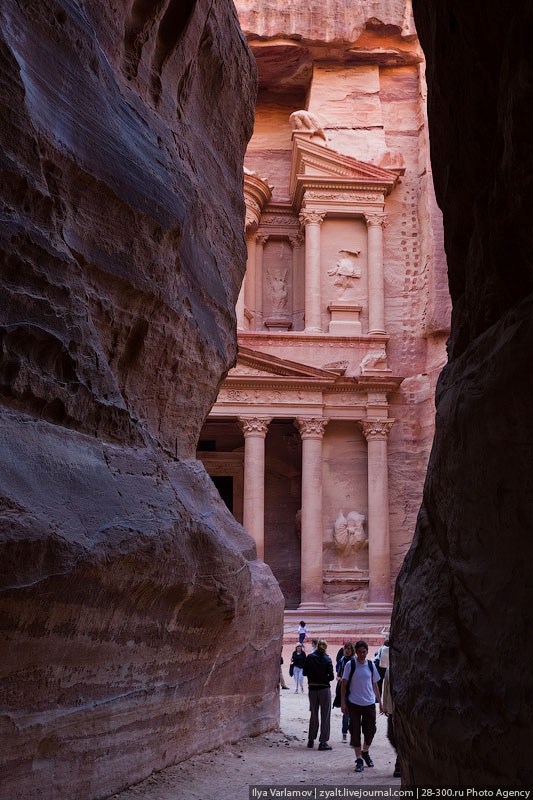
It is topped by a huge stone urn where gold and jewellery were kept in - that's why it's called the Treasury. Though officially it has the name of El-hazne which means "reservoir", "tank".

A famous cat.

More pictures of local cats.



The canyon gradually becomes wider and the tourists find themselves in a natural amphitheatre sand walls of which contain many caves. But the main thing that draws everybody's attention is the hollowed out rocks containing burials inside.


The name of Petra means "rock" in Greek. And it really was the city made from rocks and there was nothing remotely similar to it. All the houses, burials and temples were patiently cut from the rocks. So in this way the majestic monumental city of Petra was finally built right in the center of the desert by the 1st century AD.





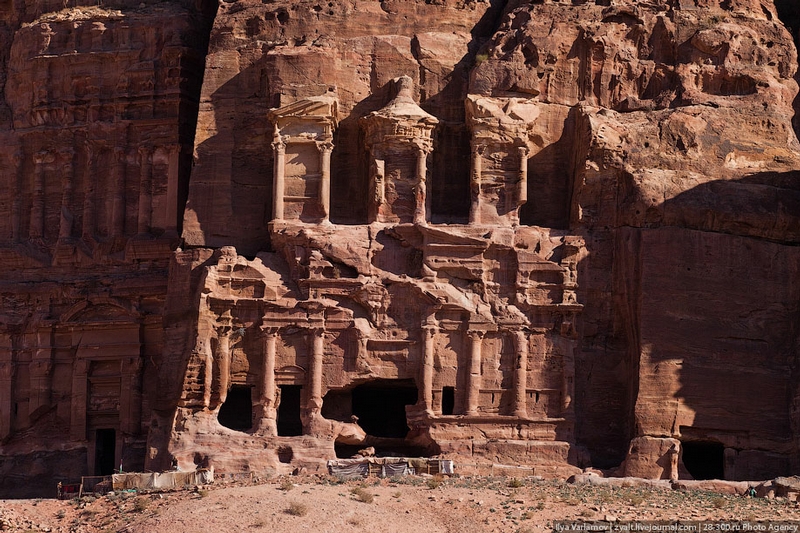




The final point of the route is the Ad-Deir ("Monastery" in Greek). To get there one should climb the hill for quite a while but it's also possible to take a donkey for 5 euros.








The Ad-Deir is a huge building, 50 m in width and 45 m in height. Judging by the crosses cut in its walls, sometime the temple served as a Christian church.

Not far from the monastery there are some observation platforms standing on which one can admire the beatiful view of the valley.



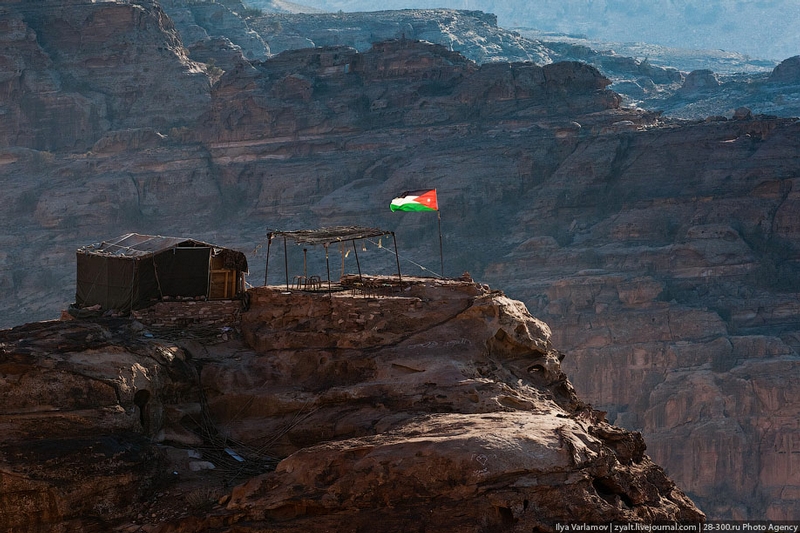

A bedouin selling some goods.

If you decide to visit Petra sometime, be ready for a great quantity of the small bedouins - souvenir sellers, begging for your money.




Some tourists try to save money and get to Petra without a ticket. But that doesn't work because there are special guards whose job is to check the tickets, catch people without them and simply keep order.





And that is how an alternative gorge looks. Very beautiful. The road is much longer, but it's really worth it.




Petra is opened from 6 a.m. to 5 p.m. Sometimes it's closed at night and one has to buy an additional ticket to get there. All the road to the Treasury is beautifully decorated with paper flashes.

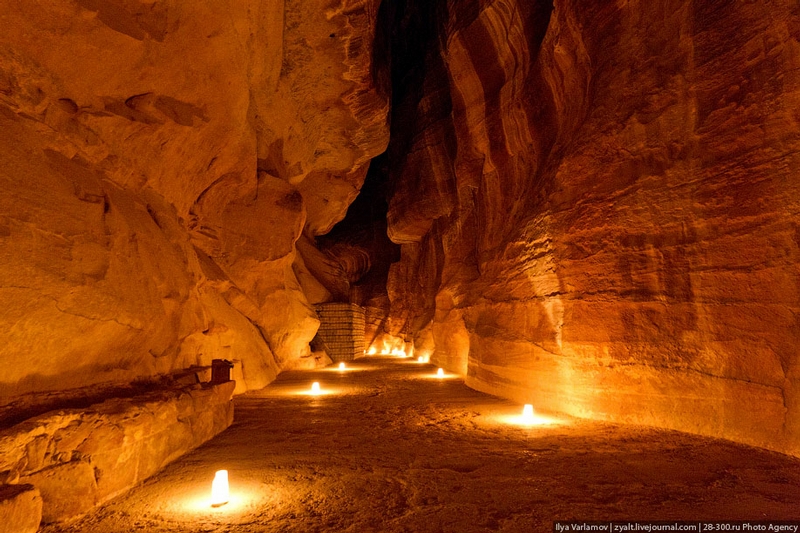
A little performance on the square of the Treasury.




View of Petra from the neighbouring mountain.

via zyalt
You have read this article Place + Nature
with the title Ancient Petra City. You can bookmark this page URL http://emill-emil.blogspot.com/2011/03/ancient-petra-city.html. Thanks!







